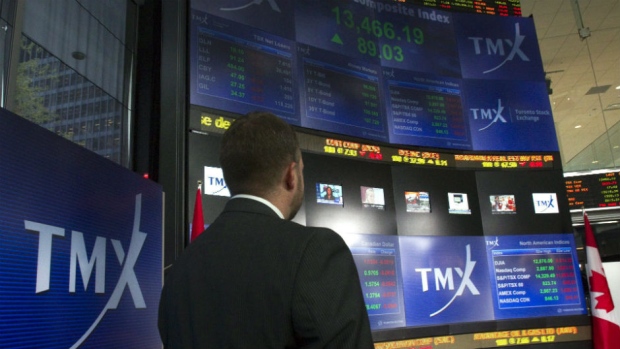Mar 22, 2018
Canadian stocks look cheap — until you factor in record debt
, Bloomberg News

It’s no secret Canadian consumers are mired in a mountain of debt but it’s the less-talked-about corporate debt load that may help explain the stock market’s perennial underperformance.
Canadian companies have a record 60 cents of debt for every dollar of sales that they generate, compared with about 35 cents of debt per dollar for U.S. companies, according to Martin Roberge, portfolio strategist at Canaccord Genuity Group Inc.
Aggregate Canadian debt has risen four-fold since the peak of the last cycle with companies issuing a record C$110 billion ($77 billion) in 2017 as firms took advantage of low interest rates. It’s broad based, with every sector on the S&P/TSX Composite Index expanding its net debt relative to sales over the past 10 years.
“Companies in Canada are not dummies,” Roberge said in a phone interview. “They’ve been using this lever to finance their buybacks, dividend increases, and M&A.”
On a forward price-to-earnings basis, Canada’s stock benchmark is at the cheapest relative to the S&P 500 Index since the financial crisis. But Roberge suggests looking at the ratio of enterprise value, or market capitalization plus debt, to sales. By that metric, U.S. stocks are actually slightly cheaper than their Canadian counterparts, according to Bloomberg data -- a fact that may help explain why the S&P/TSX has lagged the S&P 500 for much of the past decade.
“The fact that we’ve been piling on more debt on balance sheets than the U.S., you invert that line and it explains much of the underperformance of Canada versus the S&P 500,” Roberge said.
It’s not just the U.S. -- Canada’s EV-to-sales multiples exceed those in developed markets outside North America and emerging markets as well, Roberge said.
“When you start screening, Canada looks very, very bad relative to other countries,” he said. “If rates go up they will go up everywhere globally, so you want to be in a market that will be able to sustain a backup in rates and Canada will be way more vulnerable than other countries.”
Roberge also believes Canada isn’t using that debt to its full advantage.
“The problem is that not only do we have more debt but we’re not even able to grow our earnings faster than the rest of world, so this leverage is not being used properly,” he said.
Still, he doesn’t believe corporate Canada’s debt loads are a concern as long as interest rates remain low, and the ratio of debt to sales appears to have stabilized, which he calls a “ray of light.”
But if companies don’t start deleveraging, he believes Canada’s stocks could fall to the lowest level relative to the S&P 500 since before the tech bubble popped in 2001.
“There’s no doubt that if we keep on adding more debt than the U.S., it’s hard to imagine that the relative performance will turn around and stage a sustainable bounce,” he said.





